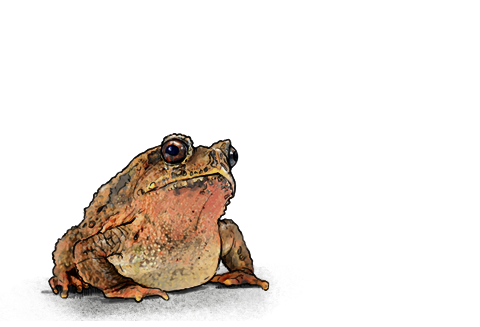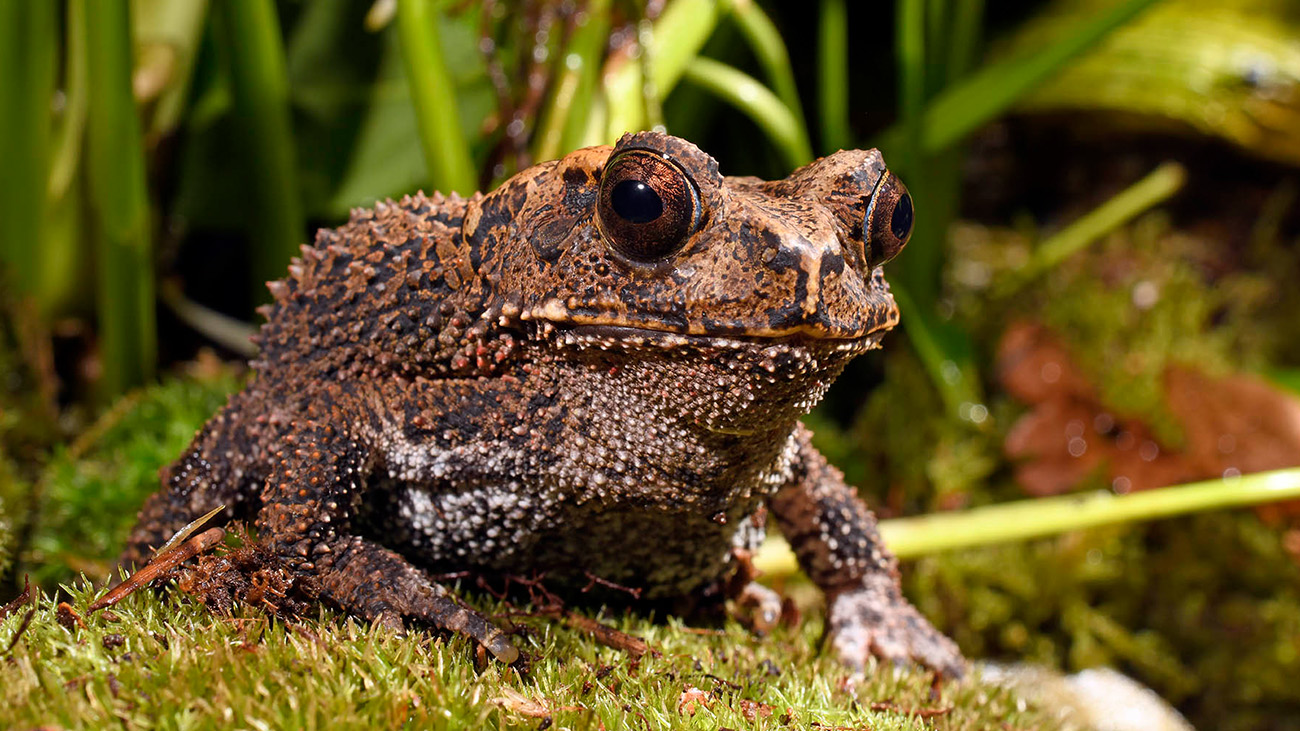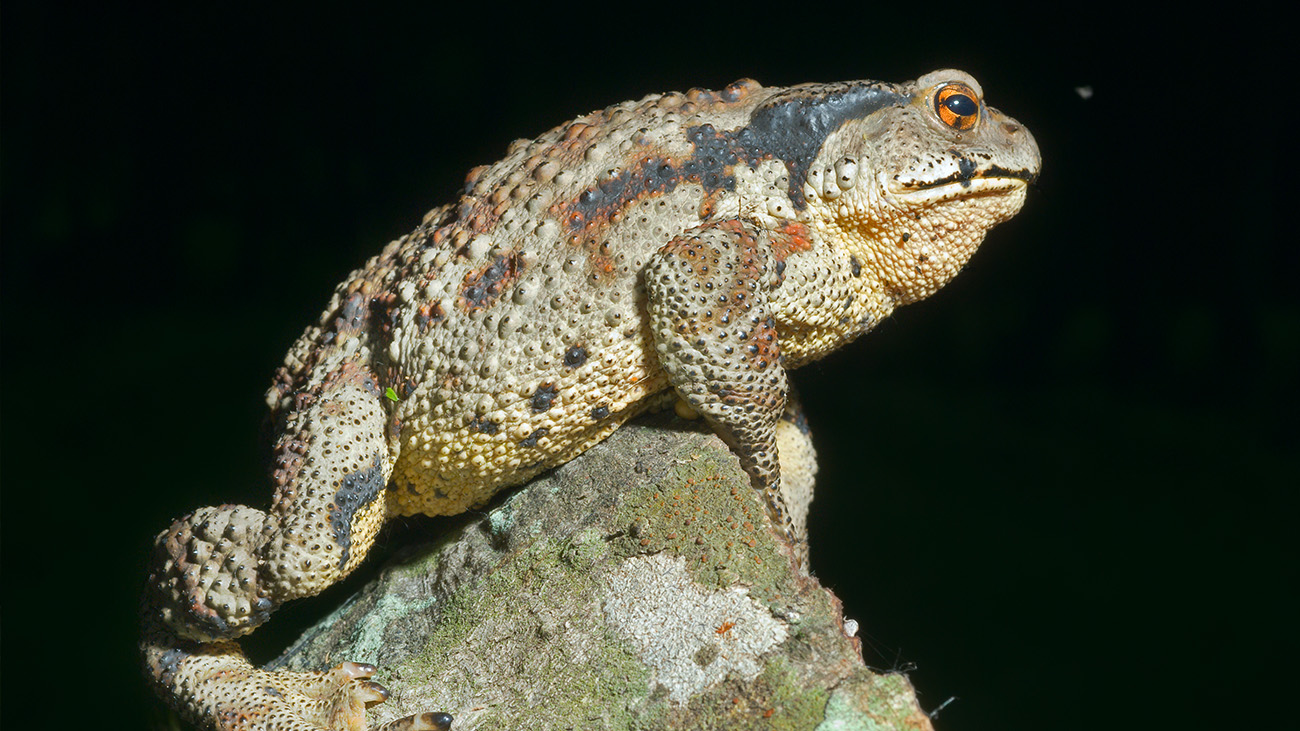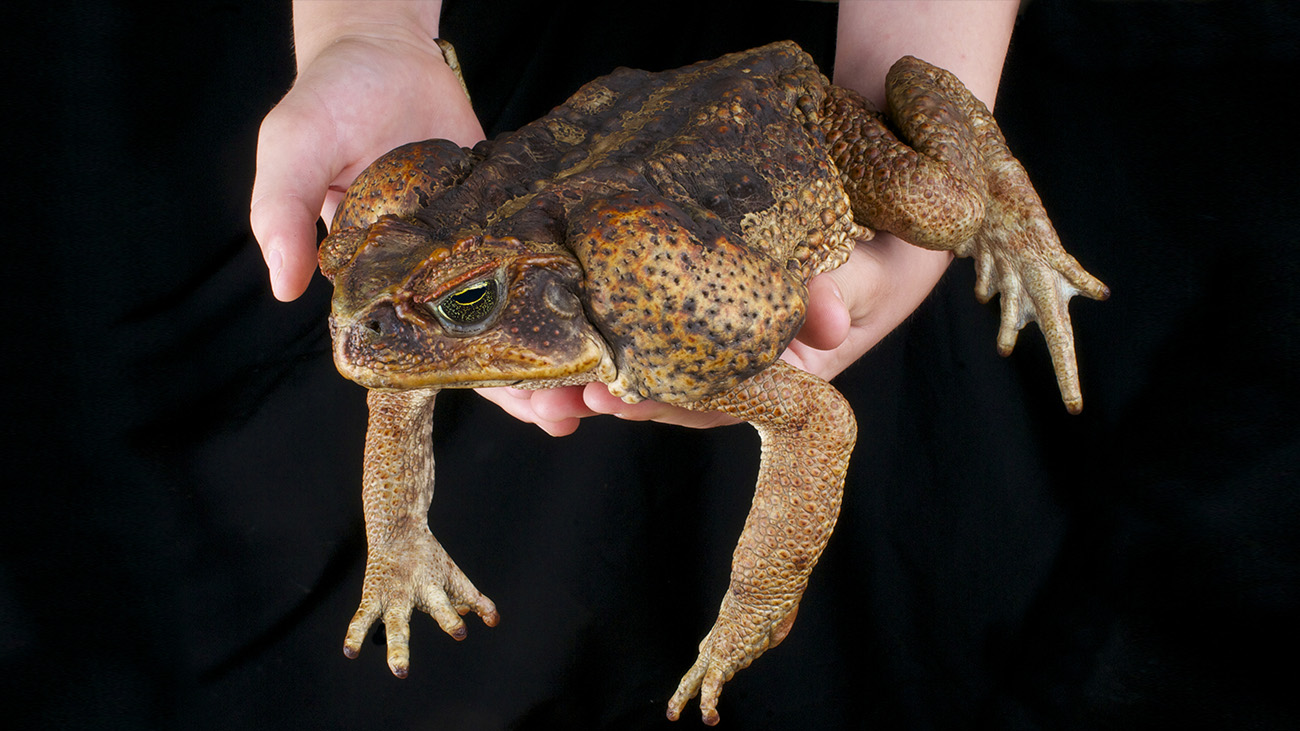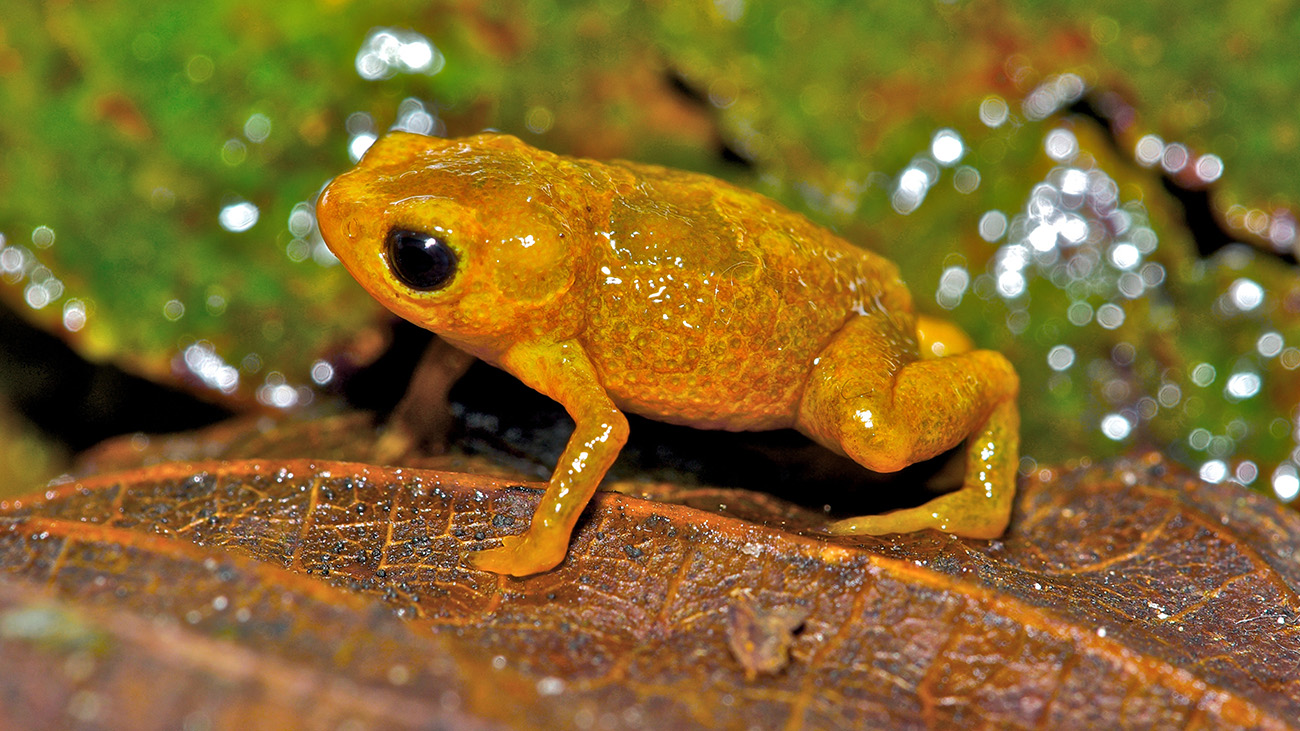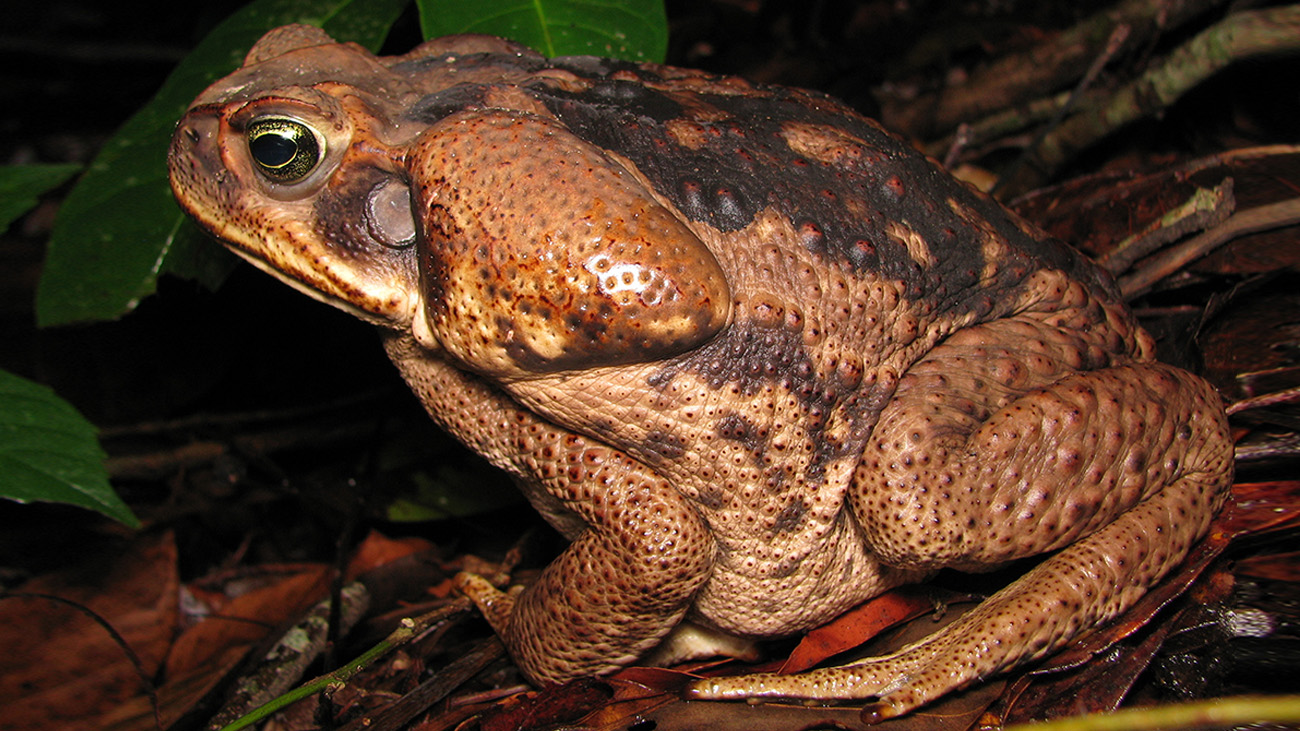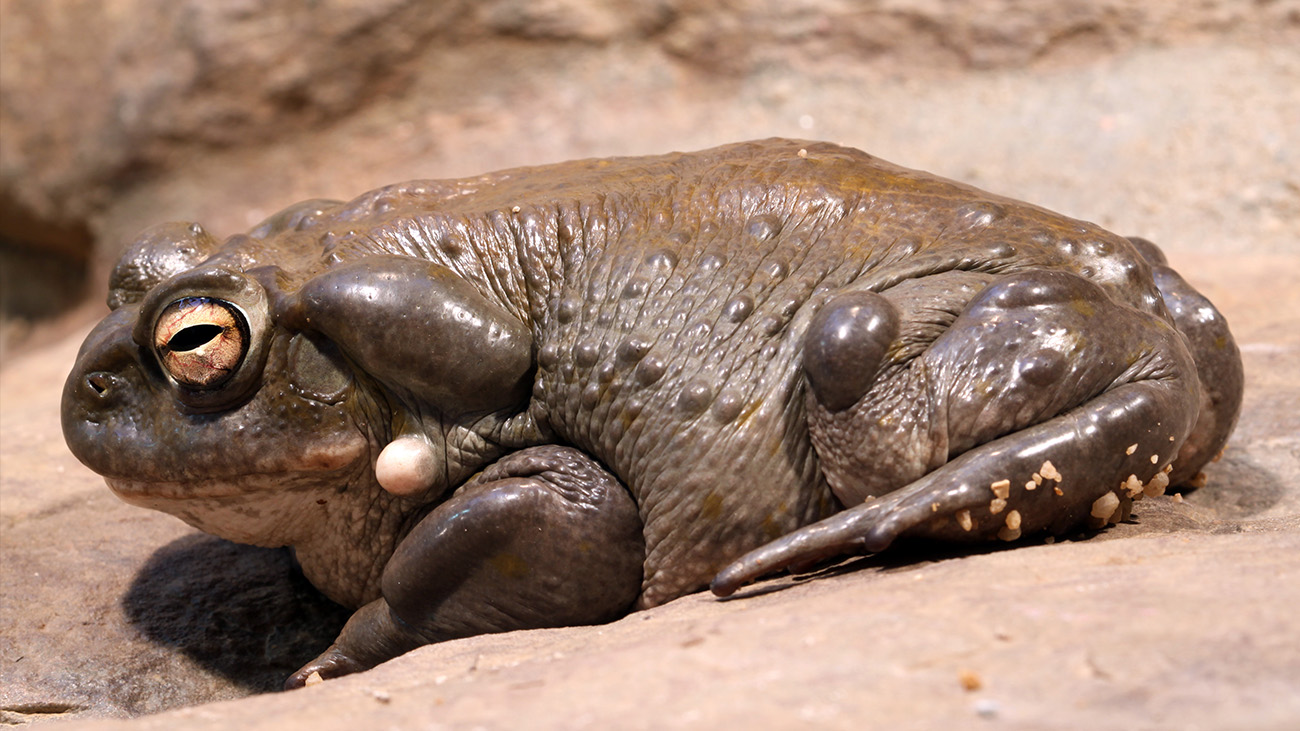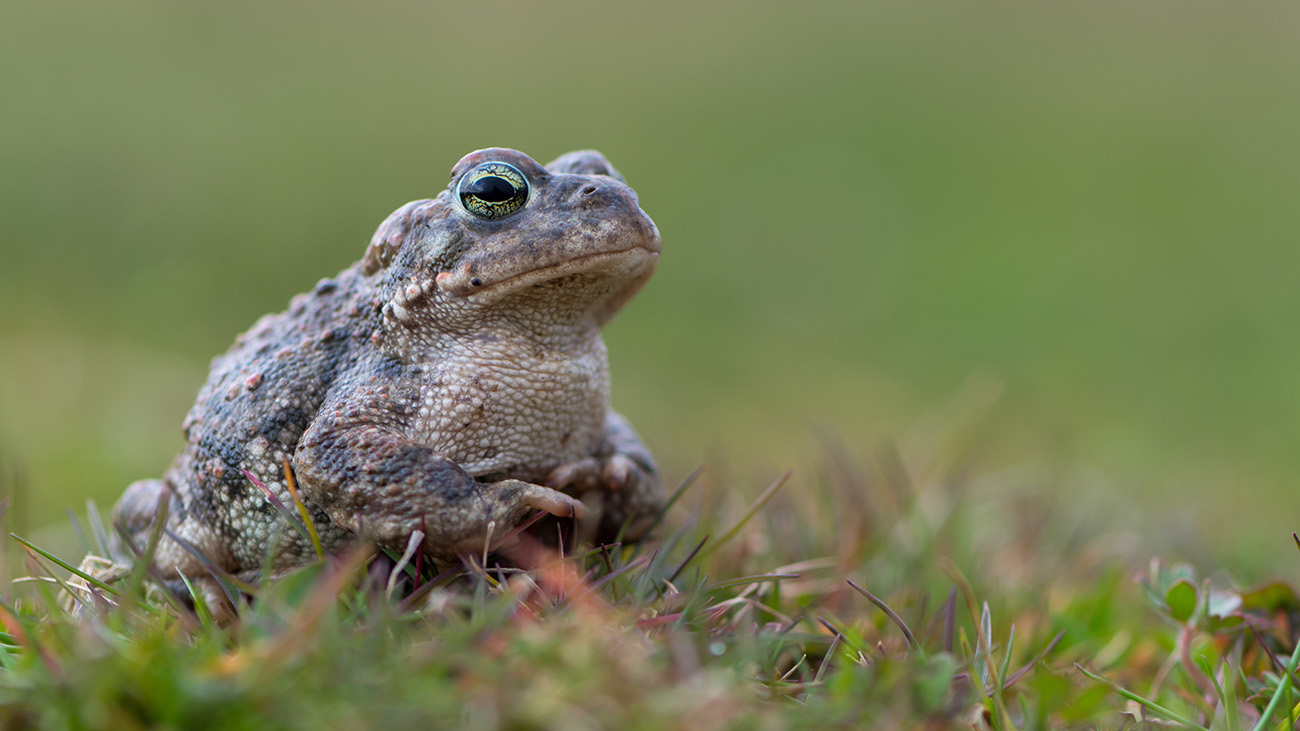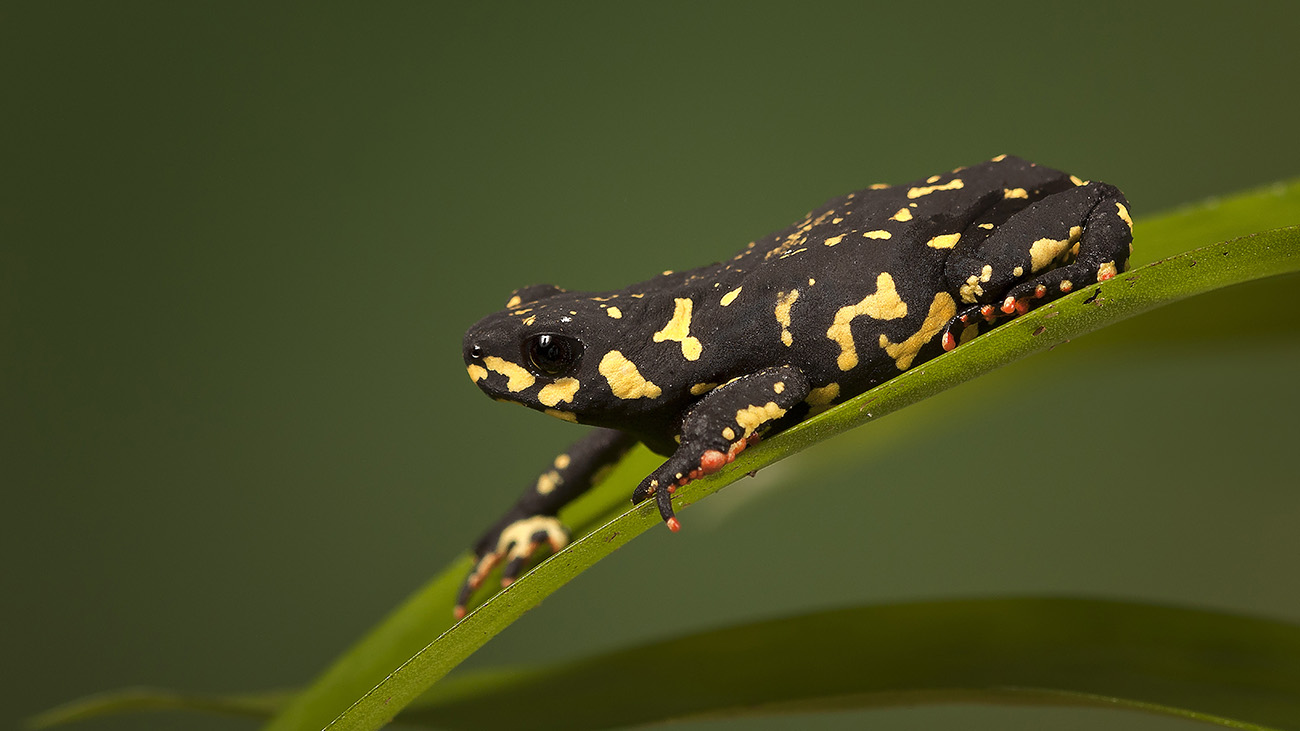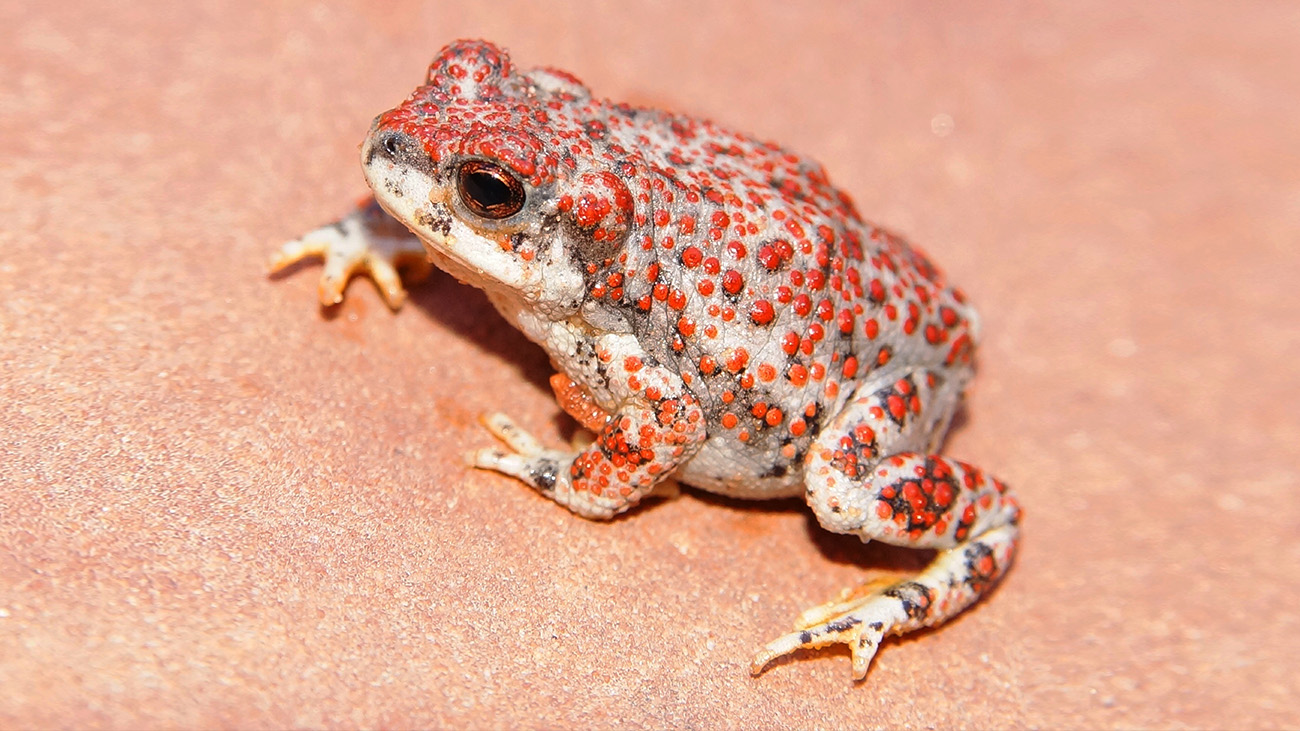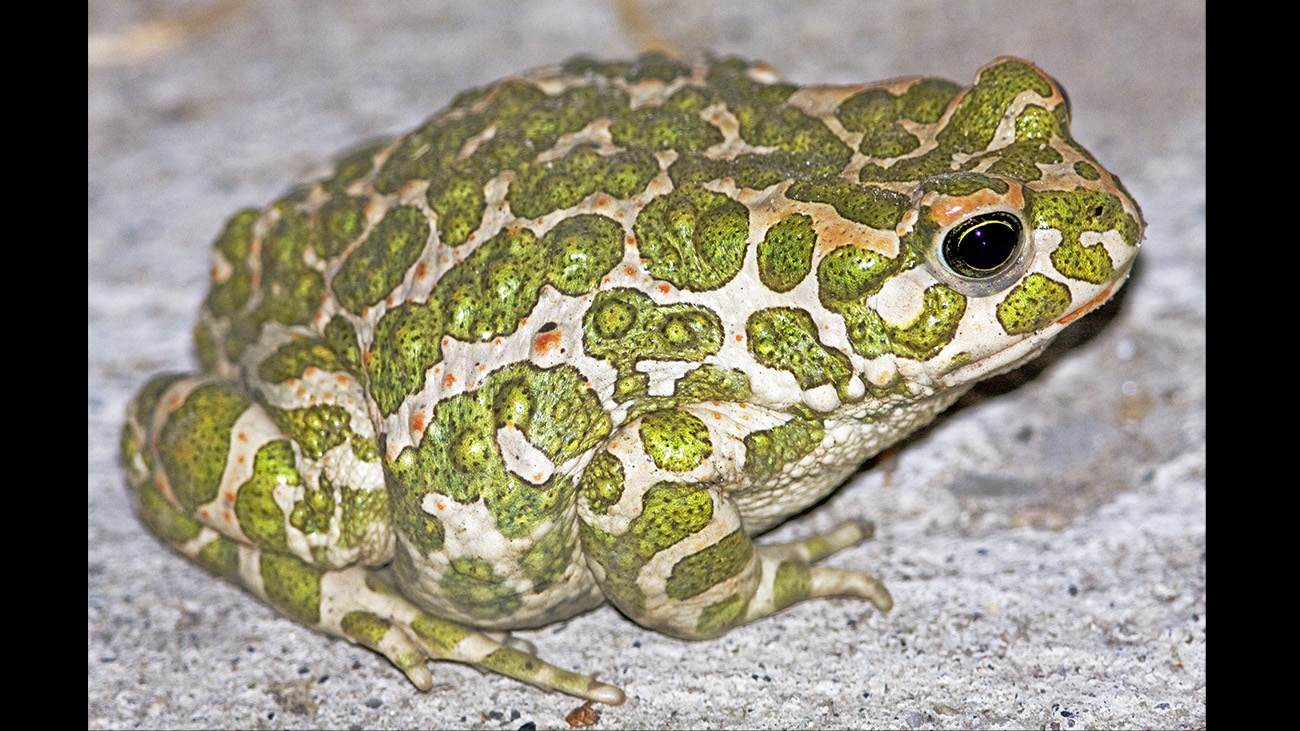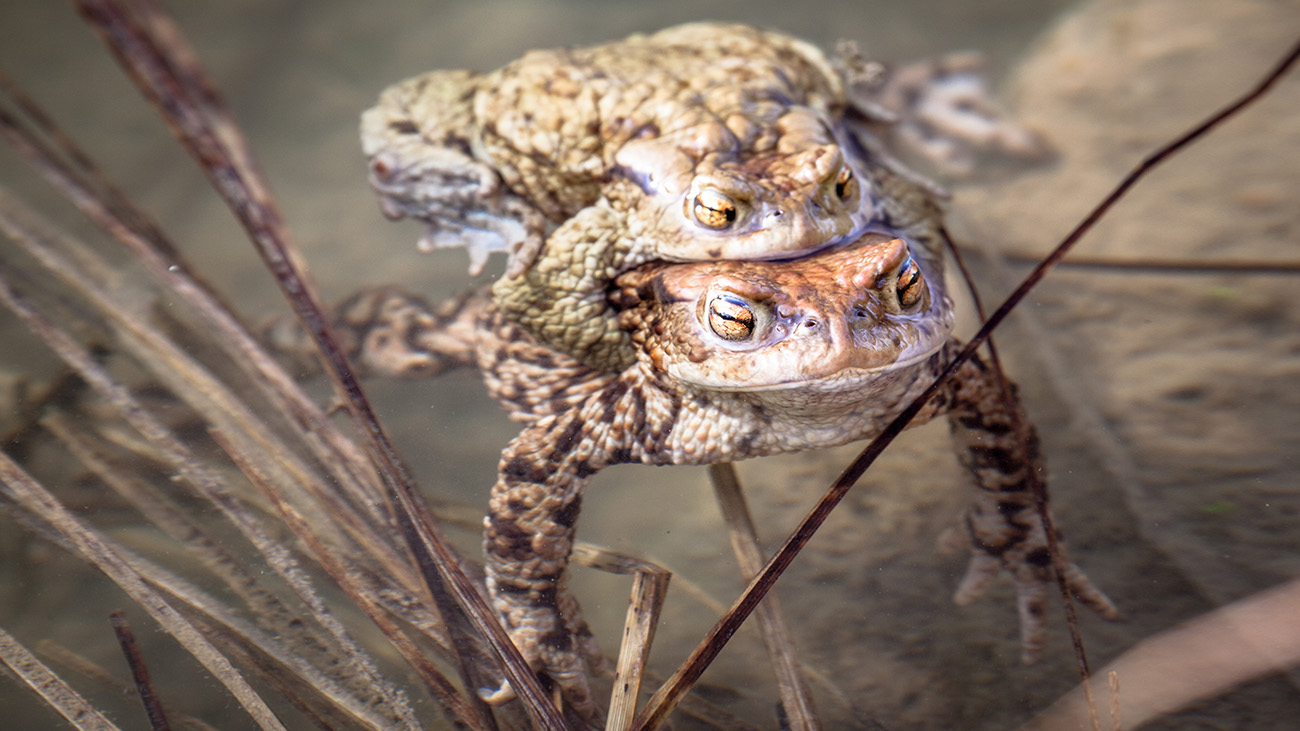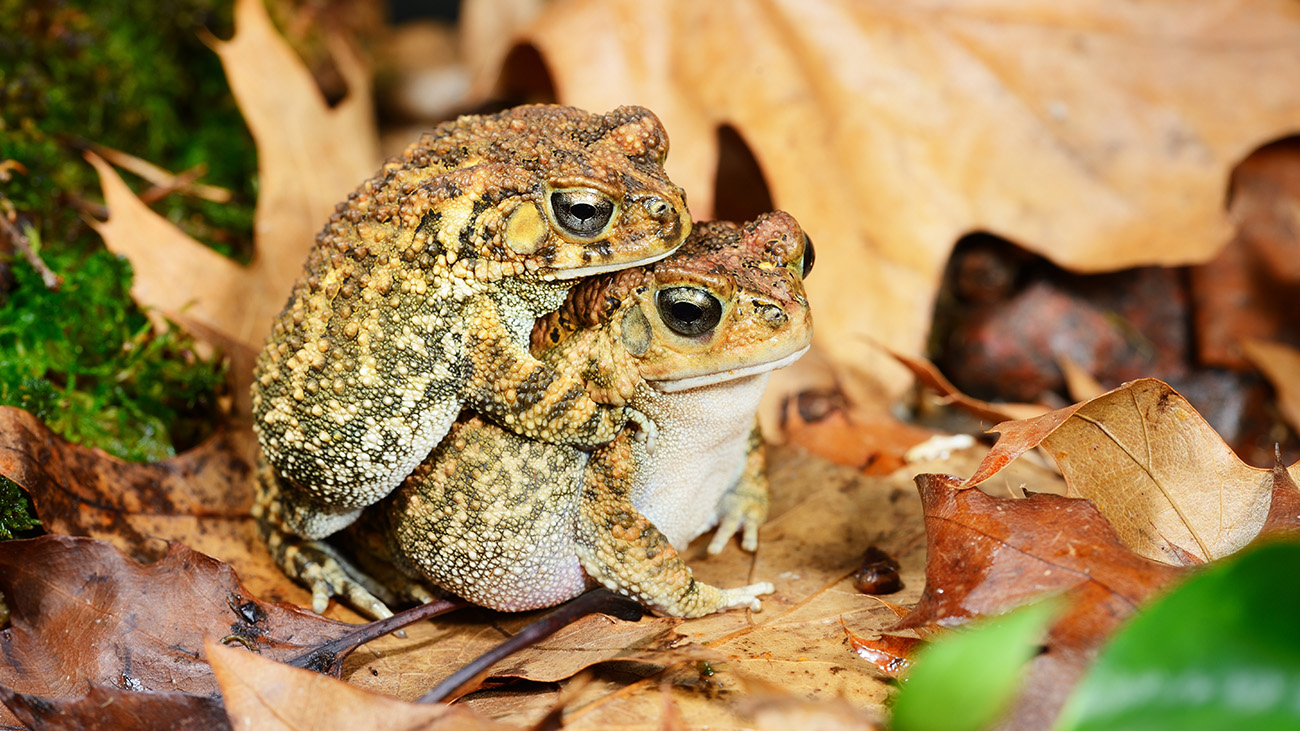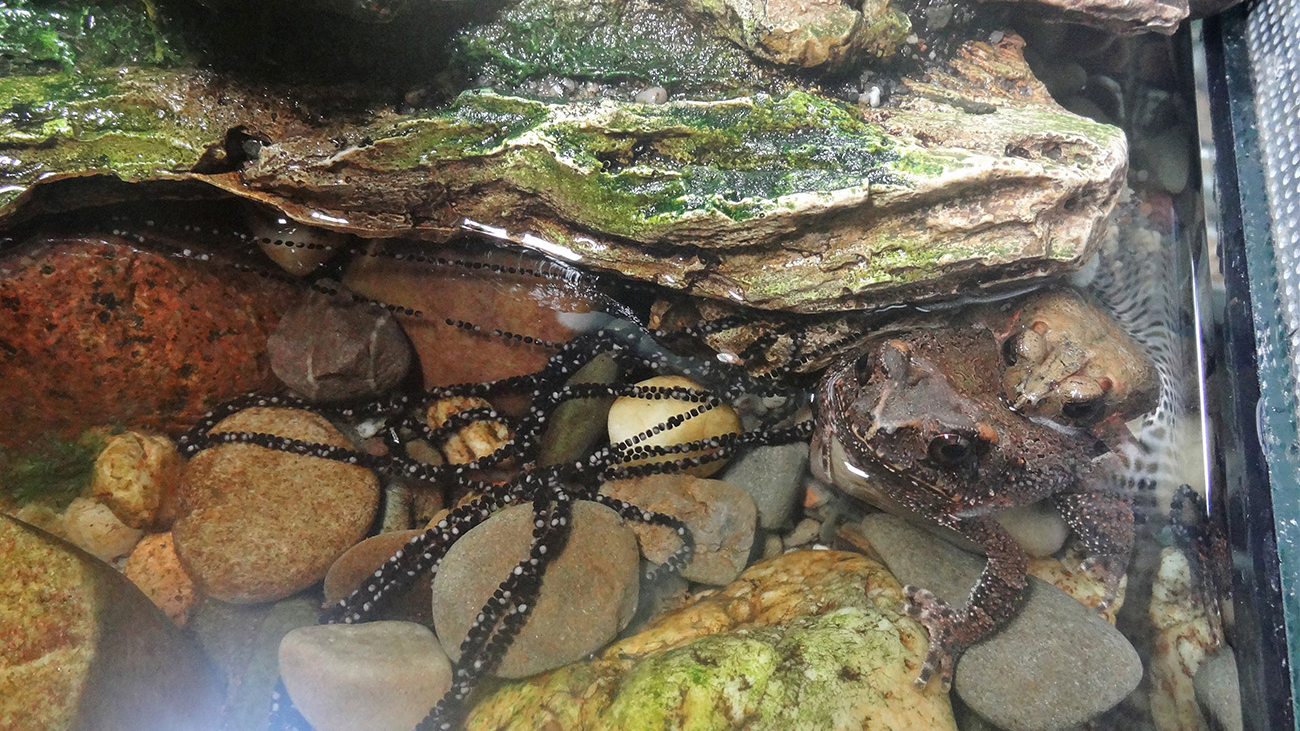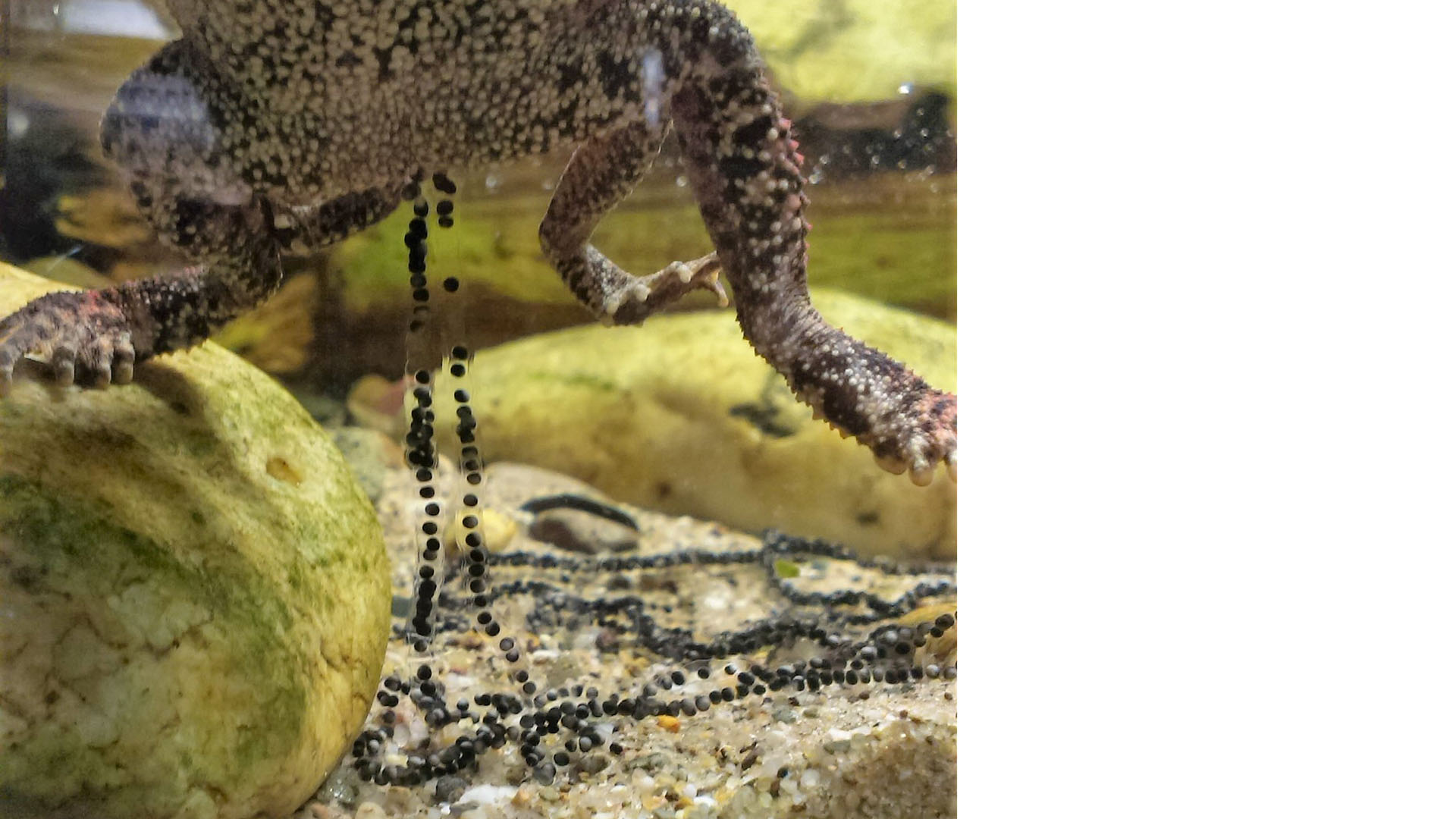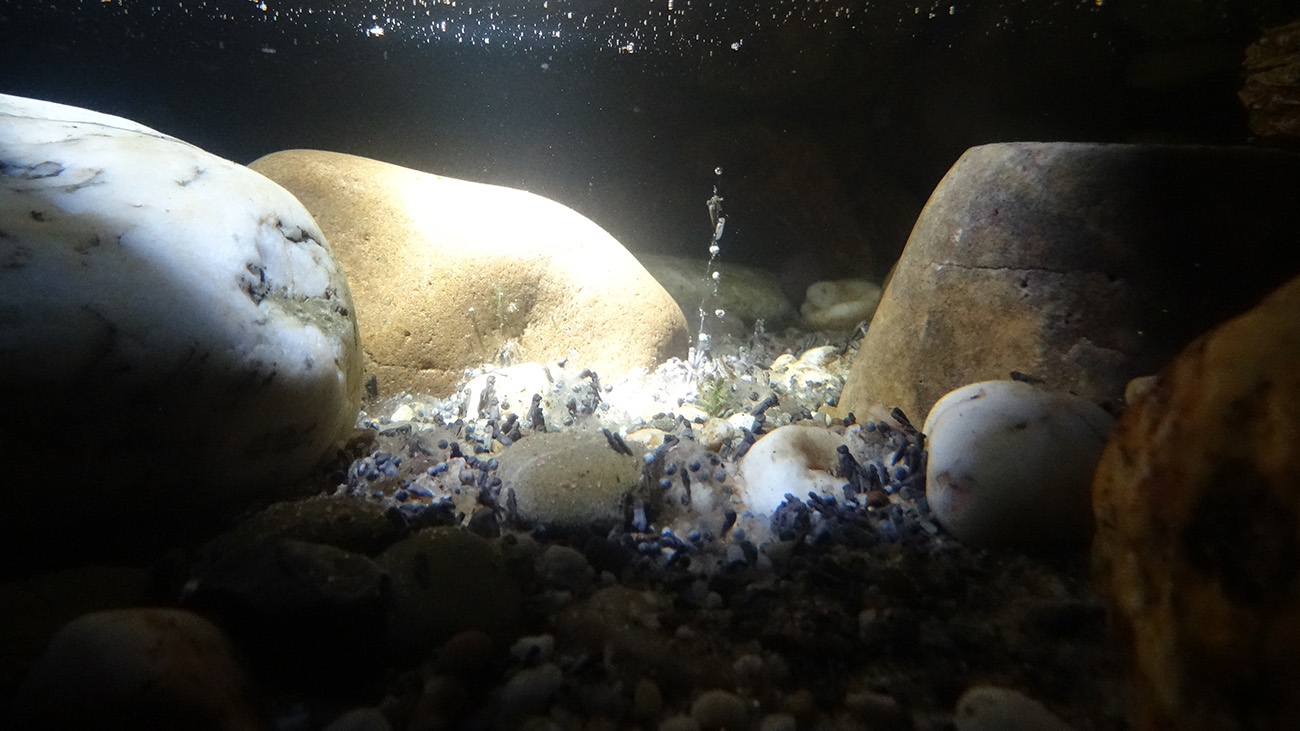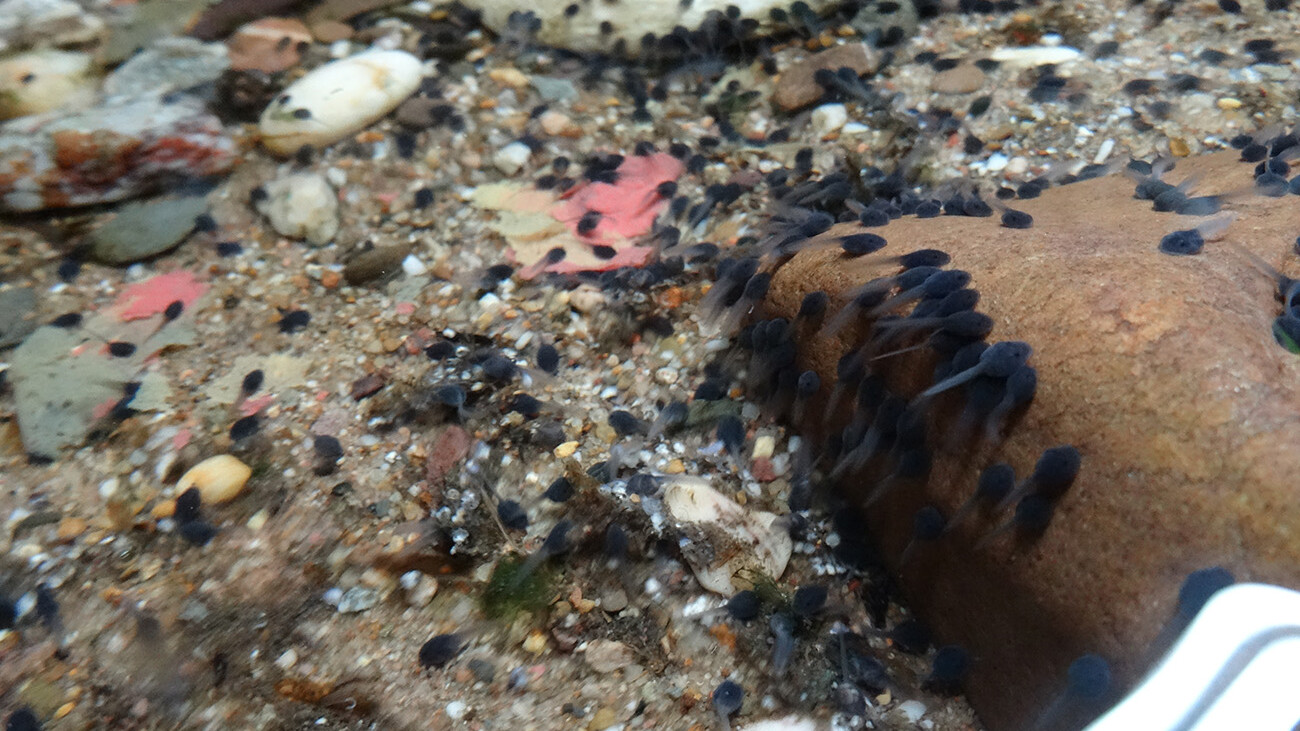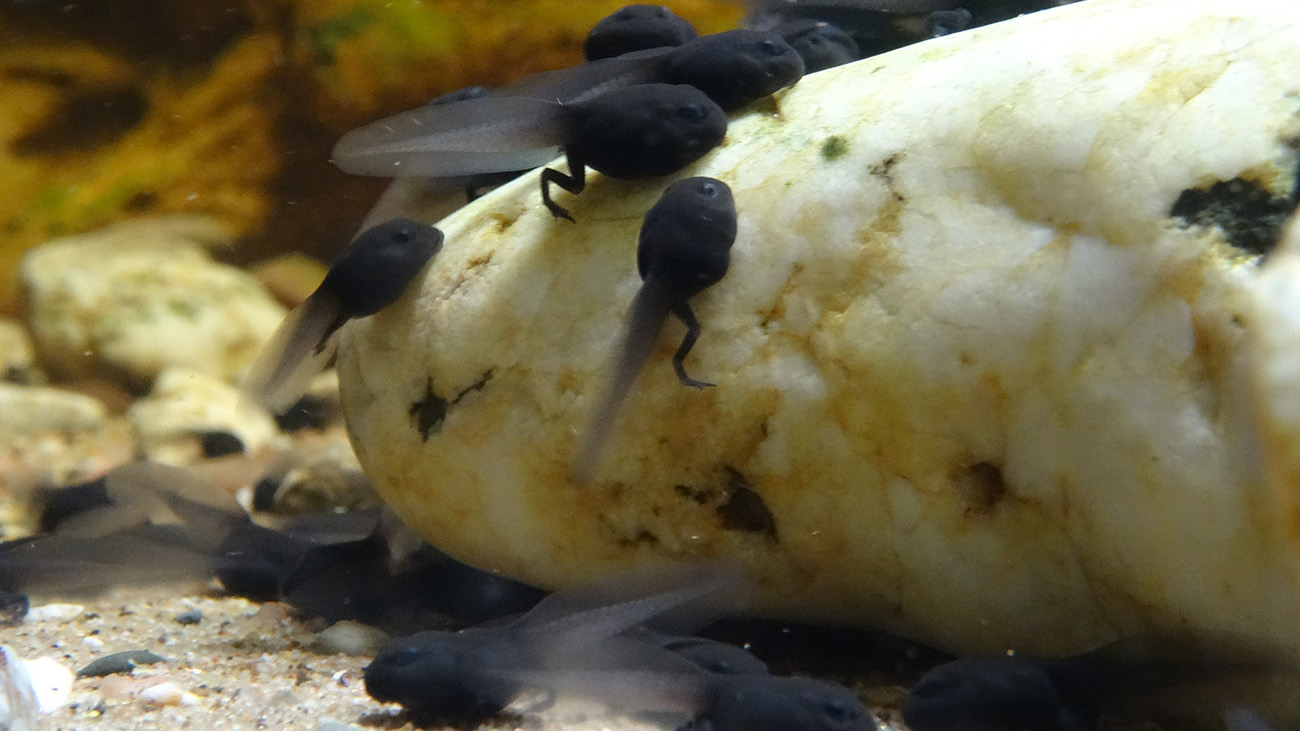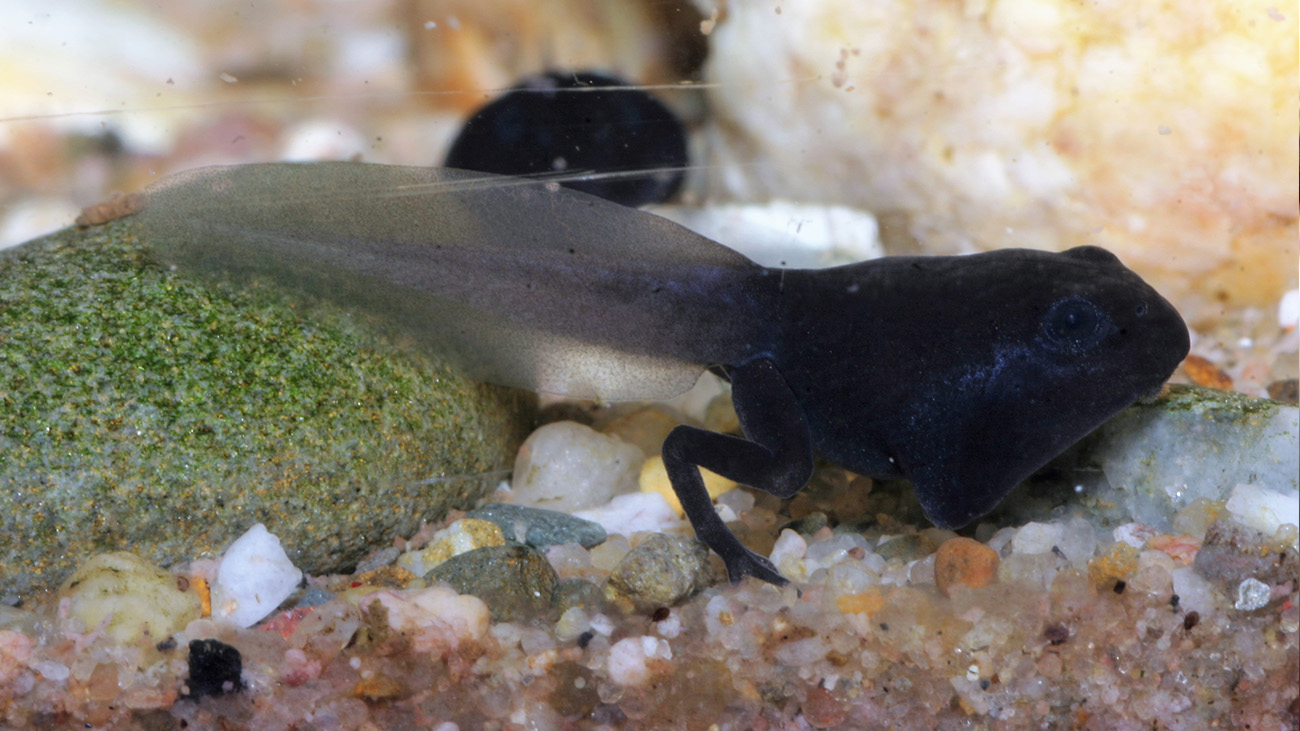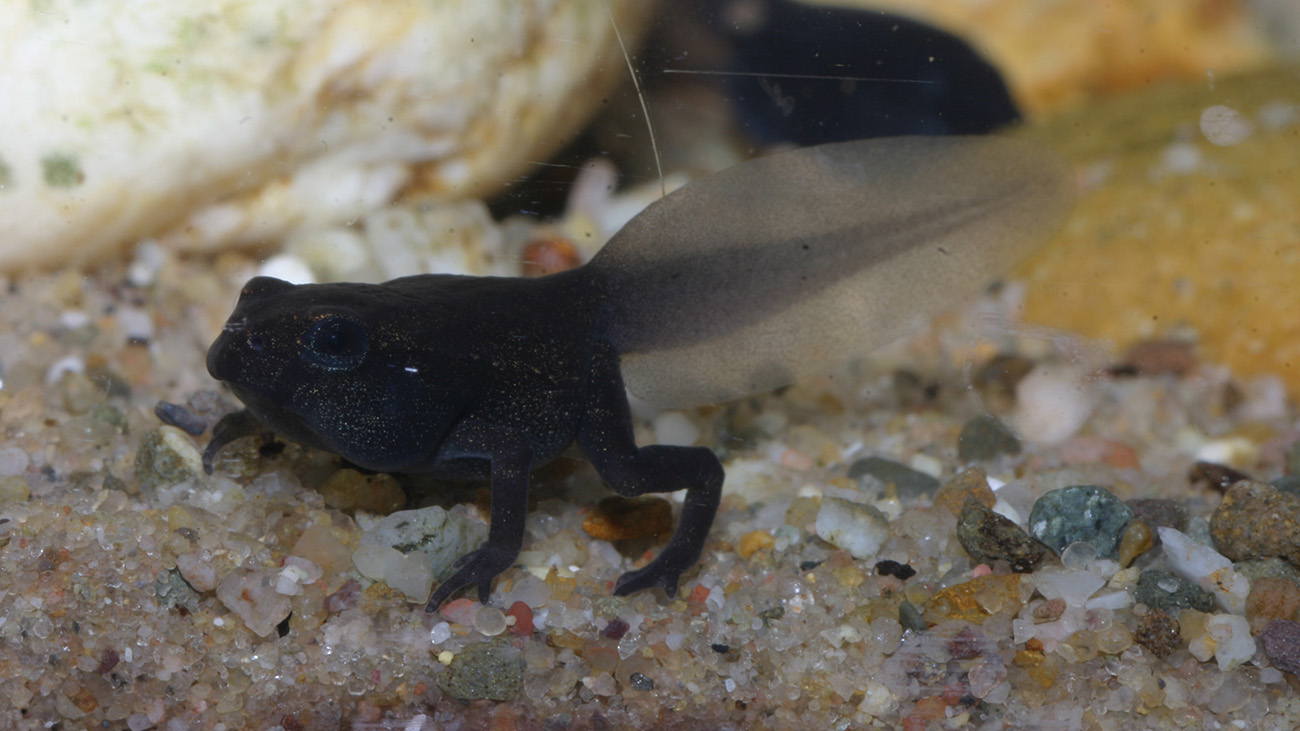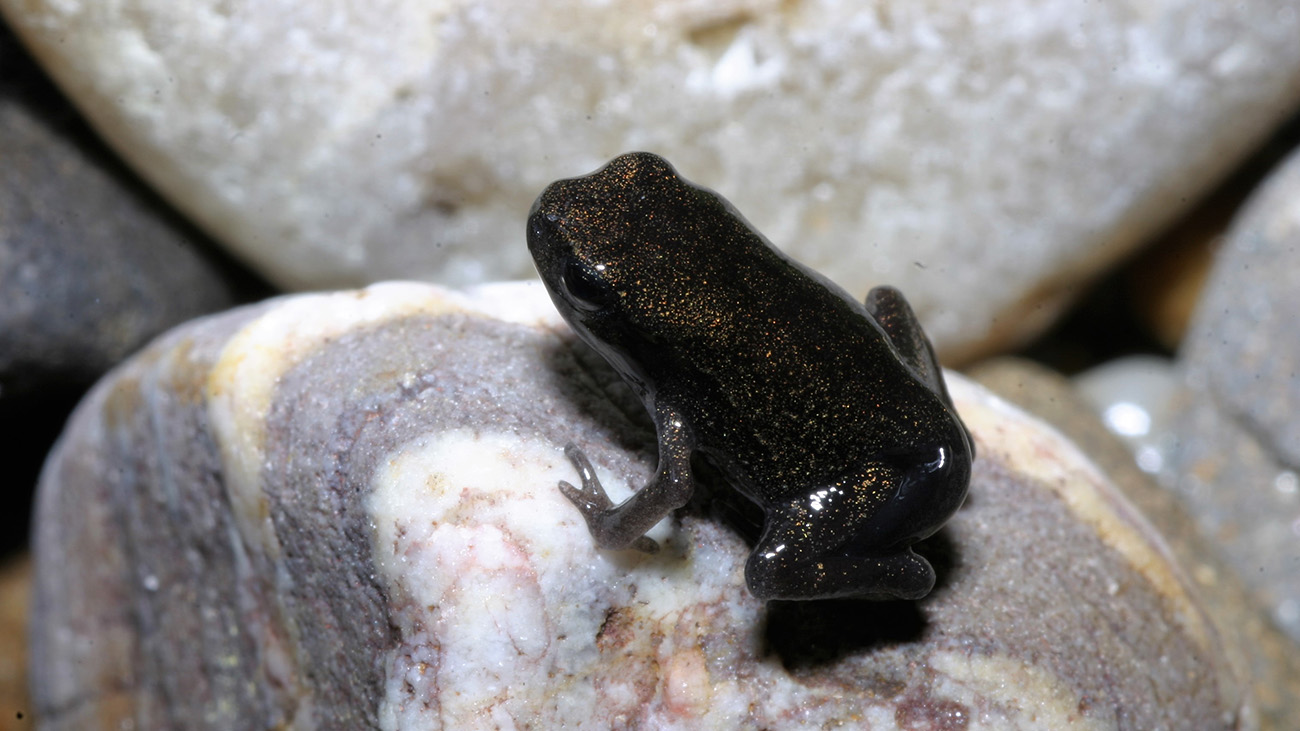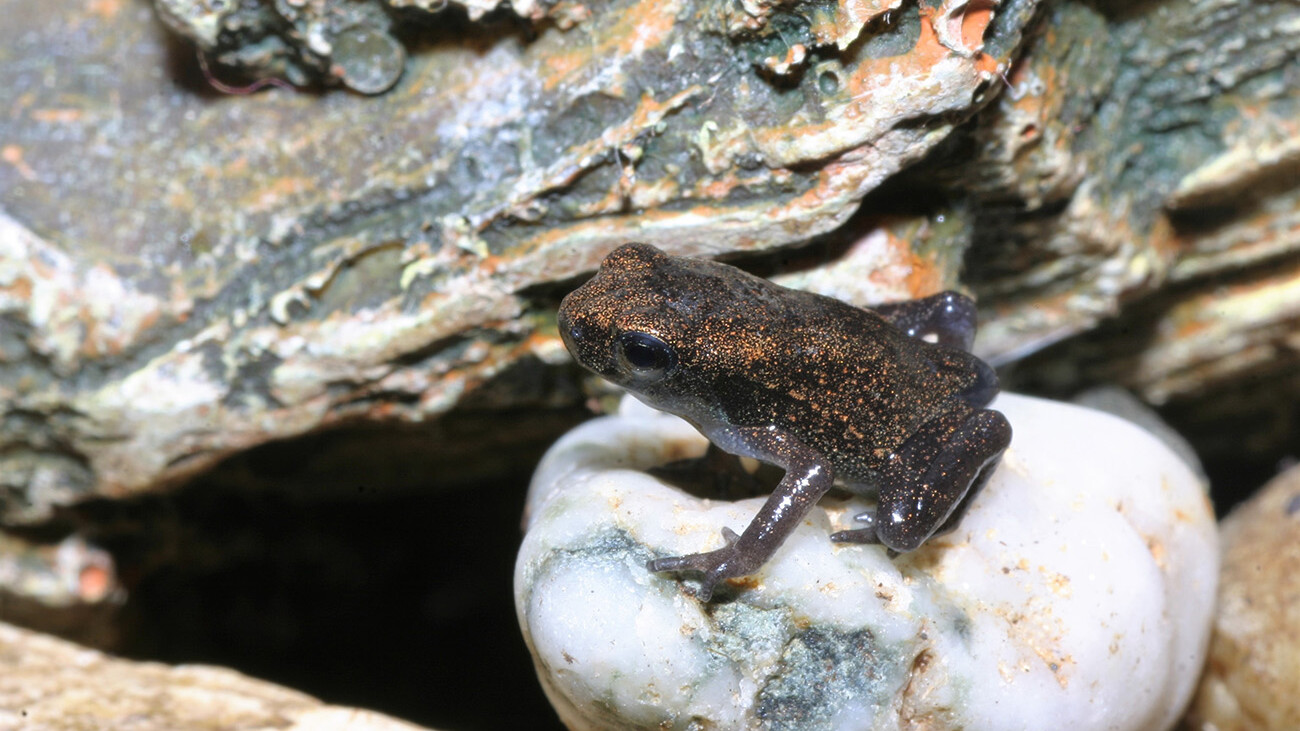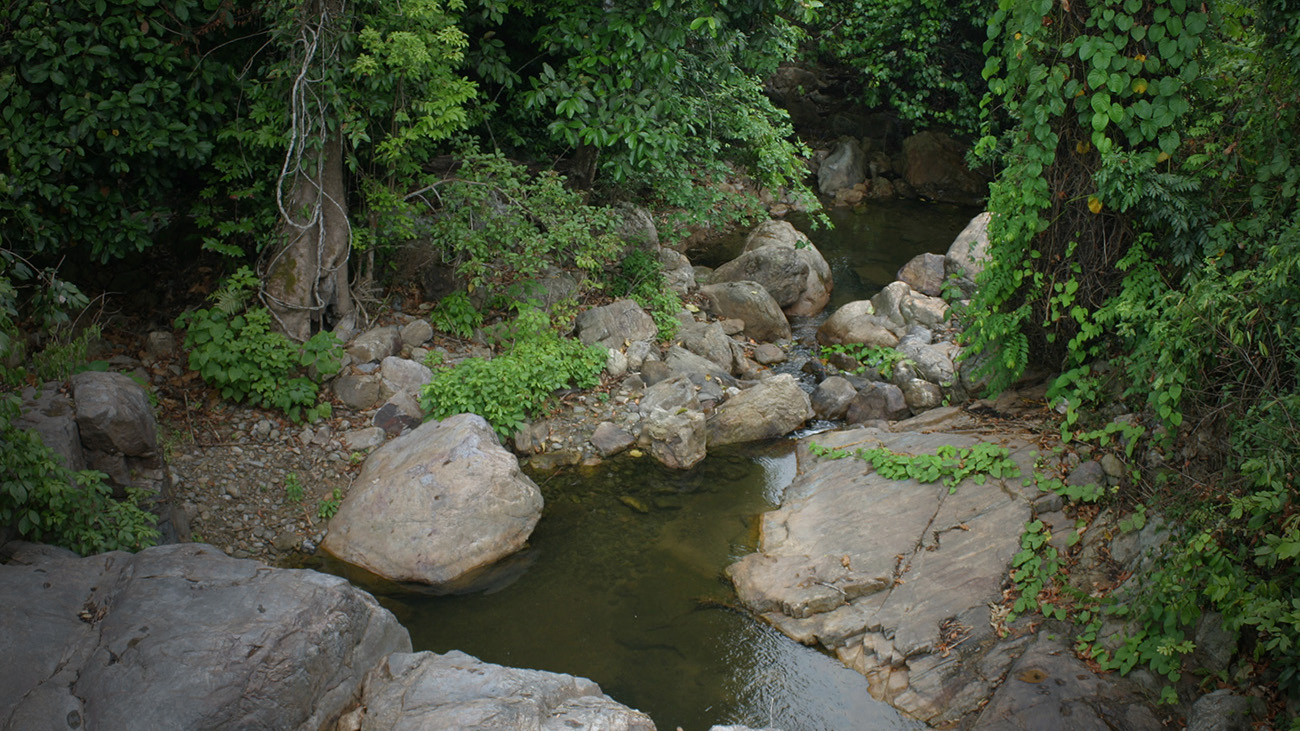Bony-headed Toad
Ingerophrynus galeatus
Bony-headed Toad
Ingerophrynus galeatus
CC goal
40 breeders
Status 11/2025
CC goal
225 animals
Status 11/2025
CC goal
40 breeders
Status 11/2025
CC goal
225 animals
Status 11/2025
Some like it wet. The Bony-headed Toad lives quite close to water. It hops around in the soil close to streams in lowland rainforests in Cambodia, Laos, Vietnam, and southern China. The toads, growing up to nine inches long, are well camouflaged in the leaf litter due to their brown and olive military look.
Very hard-headed
The female wears the pants in this relationship: its name already hints at the strong bone crest that make the toad look almost like it is wearing a helmet. Both sexes have a bone crest between their eyes and a large secretion gland behind their ears, but in the female, the crest grows up to the tip of its snout.
Toads of the World
The Munchies
Considering how sturdy the Bony-headed Toad is, it is quite unusual that it prefers eating small animals. Even when it is fully grown and has a huge appetite, it eats tiny snacks such as fruit flies – lots of them.
The mating process, judging by human standards, is rather unromantic
Toad Love
At the beginning of the rainy season, the toads start to mate. In the nearest body of water, the males try to lure the females with their shouts. If this succeeds, the male, which is smaller, clings to the female’s back. In this so-called Amplexus, the animals are sometimes stuck to one another for days before they finally deposit their eggs in the water. The mating process, judging by human standards, is rather unromantic: The female deposits its eggs in long strings, the male adds his sperm into the water – done. Their offspring are then left to take care of themselves.
Development from Egg to Toad
Do Not Disturb
Despite the fact that Bony-headed Toads are comparatively rare, they are not yet considered an endangered species because their habitat is spread across such a wide area. They live exclusively in undisturbed rainforests, which are getting more and more scarce in southeast Asia. In Vietnam, the Bony-headed Toad has already been classified as “endangered” on the Red List.This little toad is only one of many thousands of species that depend on the lowland rainforest ecosystem.
The Bony-headed Toad’s natural habitat
For breeders
Basic information on biology and breeding
Suitable for inexperienced breeders. Terrarium size for a couple: 60 x 40 x 40 cm. Terrarium size for a group: 100–150 x 60 x 60 cm. Temperatures of 24–26 ° C year-round, only a little cooler at night. The terrarium can be arranged in the style of a rainforest, with lots of pools. The toads are usually nocturnal, but also frequently observed during the day. They eat small animals ranging from fruit flies to crickets. The tadpoles eat fish food.
